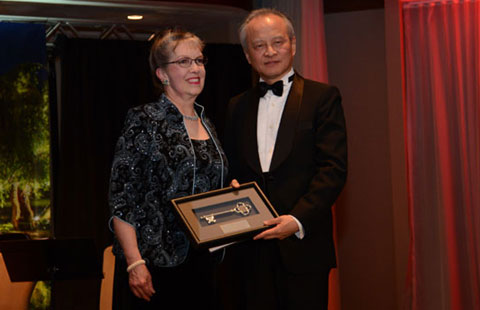ChInSEA new driver of global growth
Updated: 2014-12-13 09:00
By Milind Pant(China Daily)
|
||||||||
India, on its part, is about to embark on rapid urbanization. Planned urbanization in tandem with investments in infrastructure has the potential to boost people's incomes and modernize the country.
Third, China's mainstream consumers are expected to grow by eight times from 2010 to 2020. The absolute numbers for India and Indonesia may be lower, but their growth will be rapid too.
ChInSEA is increasingly becoming the source of soft power, with about 100 million Chinese traveling abroad every year. Also, China and India will soon be among the top three English-speaking countries in the world. Chinese and Indian cuisines resonate in large parts of the world, with Thai and Vietnamese foods catching up fast. And Indian and Chinese movies are drawing positive reviews from across the world.
Fourth, venture capital funding in Chinese startups of $5 billion-plus in the first half of 2014 exceeded the total for the whole of last year. Baidu, Alibaba and Tencent have a combined market capitalization of $500 billion. Chinese conglomerate Fosun, started by four graduates, has acquired diverse companies including the Portuguese Insurance Group, and is in talks to acquire Club Med.
Early stage venture capital funding in India crossed $1 billion for the first time. Flipkart and Snapdeal are the new e-commerce companies on the horizon. Indian entrepreneurs in infrastructure, energy and retail are gearing up for rapid growth after the few tough years.
And innovation has become the order of the day in China, with two of the three top patent applicants in the world being China's ZTE and Huawei.
Fifth, President Xi Jinping's Chinese Dream and Indian Prime Minister Narendra Modi's reform agenda are expected to lead the two countries toward greater economic success. Recently elected Indonesian President Joko Widodo, too, has strong reformist credentials, and by 2020 the ASEAN Economic Community is likely to be a reality.
So, mathematically speaking, nothing can stop China, India and ASEAN from being among the top five economies in the world by 2015, which should be a signal for policymakers, investment funds and multinational corporations to shift their focus to ChInSEA as the new driver of global growth.
The author, Shanghai-based president of Yum China, has lived and worked in India, South Africa and Thailand.

 Music at her fingers
Music at her fingers
 Across America Over the Week (Jan 16 - Jan 22)
Across America Over the Week (Jan 16 - Jan 22)
 Spend Chinese New Year in style
Spend Chinese New Year in style
 Ili river valley becomes a popular destination for swans
Ili river valley becomes a popular destination for swans
 Philip Ma: from scientist to businessman
Philip Ma: from scientist to businessman
 Birmingham's Spotlight on China dinner
Birmingham's Spotlight on China dinner
 How to distinguish doucai, wucai, Famille-rose and enamel porcelain
How to distinguish doucai, wucai, Famille-rose and enamel porcelain
 Xinjiang lake in bumper fishing season
Xinjiang lake in bumper fishing season
Most Viewed
Editor's Picks

|

|

|

|

|

|
Today's Top News
Houston's SW Chinatown
China to focus on reforms, opening of capital market
Slowdown brings new risks to banks
Trade group calls for BIT
Market status for China is 'political' issue
Birmingham's Spotlight on China dinner
Bank takes renminbi-clearing seriously
Traditional Garb
US Weekly

|

|







